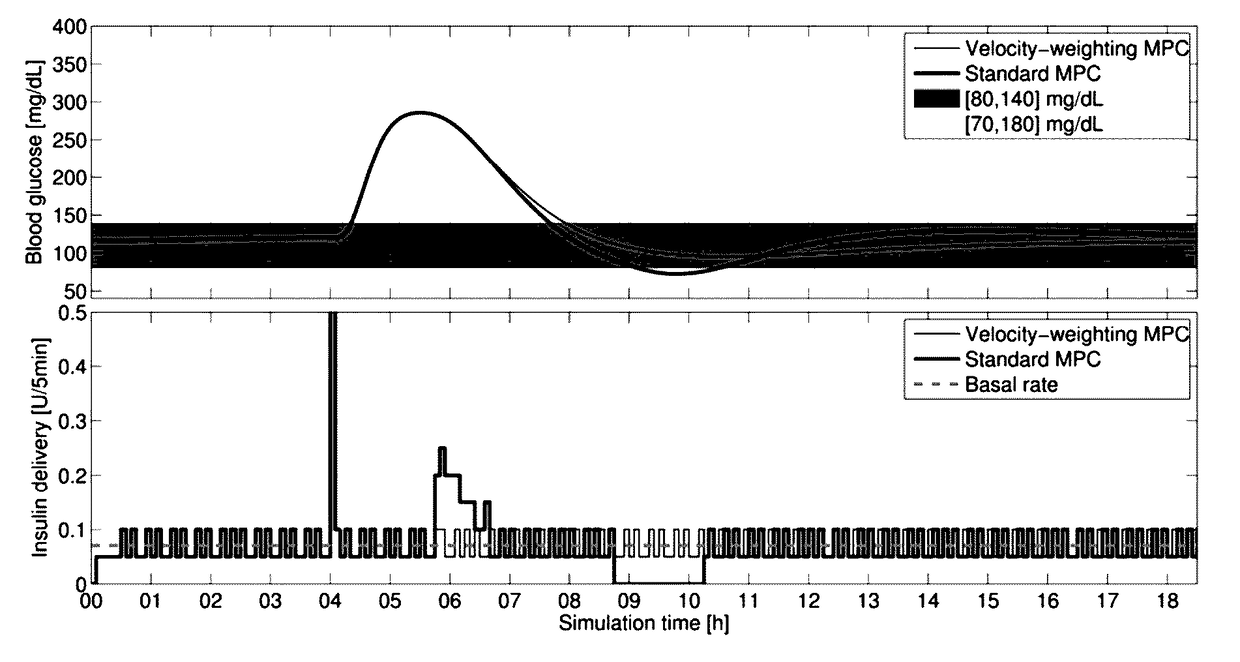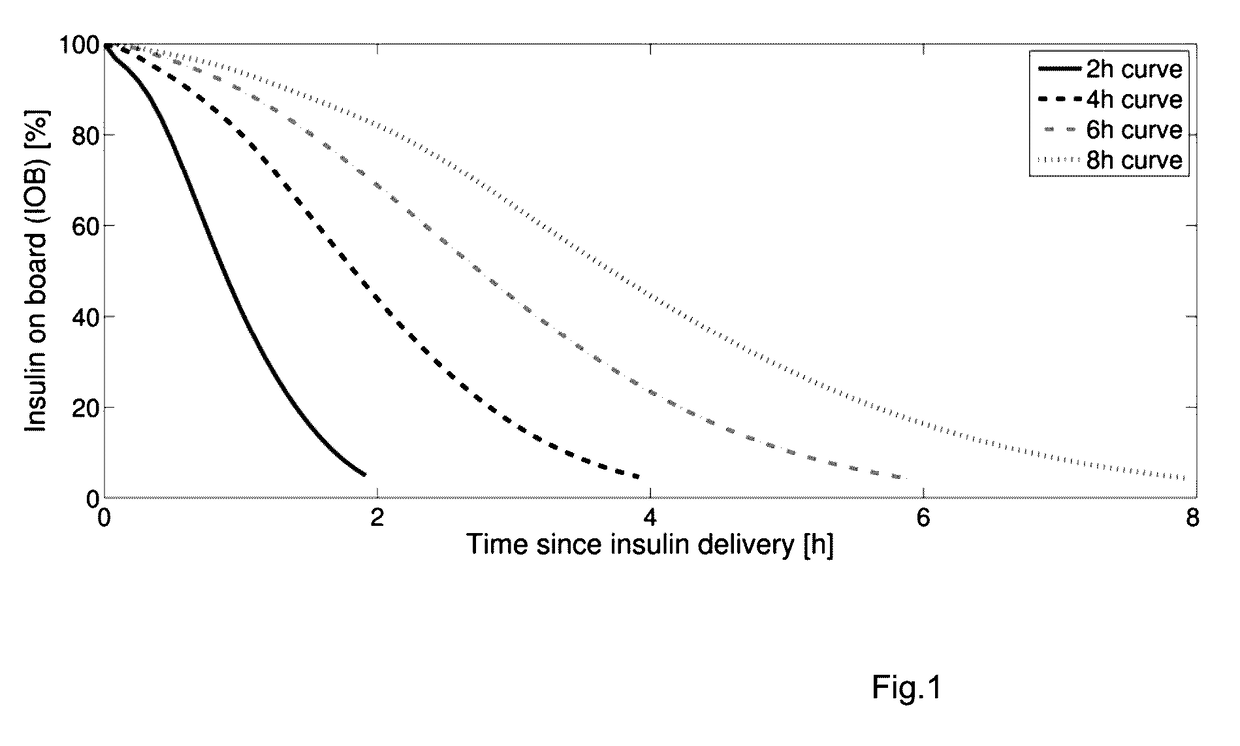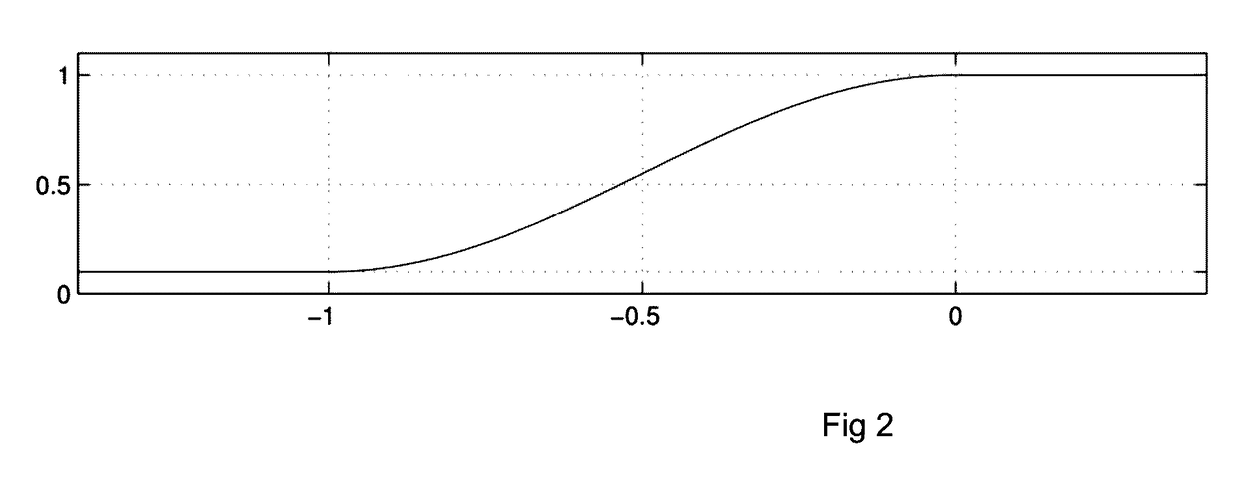Velocity-weighting model predictive control of an artificial pancreas for type 1 diabetes applications
a type 1 diabetes and pancreas technology, applied in the field of type 1 diabetes application velocity-weighting model predictive control of an artificial pancreas, can solve the problems of coma or death, great difficulty in maintaining healthy blood-glucose levels, dizziness or disorientation, etc., to achieve more effective hyperglycemia correction, reduce the occurrence of controller induced, and improve safety
- Summary
- Abstract
- Description
- Claims
- Application Information
AI Technical Summary
Benefits of technology
Problems solved by technology
Method used
Image
Examples
example
Velocity-Weighting to Prevent Controller-Induced Hypoglycemia in MPC of an Artificial Pancreas to Treat T1DM
[0038]I. The design of a Model Predictive Control (MPC) strategy for the closed-loop operation of an Artificial Pancreas (AP) to treat type 1 diabetes mellitus is developed. We disclose a velocity-weighting mechanism, integrable within an MPC problem's cost function, that facilitates penalizing predicted hyperglycemic blood-glucose excursions based on the predicted blood-glucose levels' rates of change. The method provides the control designer some freedom for independently shaping the AP's uphill versus downhill responses to hyperglycemic excursions; of particular emphasis is the downhill response. The proposal tackles the dangerous issue of controller-induced hypoglycemia following large hyperglycemic excursions, e.g., after meals, that results in part due to the large delays of subcutaneous glucose sensing and subcutaneous insulin infusion—the case considered here. The effi...
PUM
 Login to View More
Login to View More Abstract
Description
Claims
Application Information
 Login to View More
Login to View More - R&D
- Intellectual Property
- Life Sciences
- Materials
- Tech Scout
- Unparalleled Data Quality
- Higher Quality Content
- 60% Fewer Hallucinations
Browse by: Latest US Patents, China's latest patents, Technical Efficacy Thesaurus, Application Domain, Technology Topic, Popular Technical Reports.
© 2025 PatSnap. All rights reserved.Legal|Privacy policy|Modern Slavery Act Transparency Statement|Sitemap|About US| Contact US: help@patsnap.com



